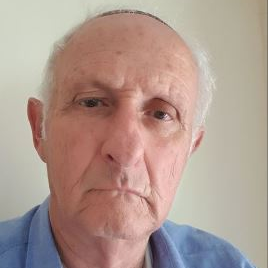Advances in Additive Manufacturing of Ti-Based Alloys: Processing and Simulation
A special issue of Metals (ISSN 2075-4701). This special issue belongs to the section "Additive Manufacturing".
Deadline for manuscript submissions: closed (10 October 2023) | Viewed by 1606
Special Issue Editor
Interests: selective laser melting; titanium alloy (TiAl6V4); inconel (trademark); high-entropy alloys; laves phases; laser cladding; cast alloys; die castings; eutectics
Special Issue Information
Dear Colleagues,
Titanium alloy has broad application prospects in various industrial fields, including shipbuilding, aerospace, and automobile manufacturing, due to its excellent physical and chemical properties such as low density, high temperature resistance, and corrosion resistance. The application of titanium alloy has played a great role in promoting industrial development and accelerated the development of modern industry.
The additive manufacturing (AM) technology of titanium alloy solves the machining problem of precision structural parts and further increases the application range of titanium alloy. According to the different heat sources of additive manufacturing technology, titanium alloy additive manufacturing technology can be divided into laser/electron beam additive manufacturing, fusion welding additive manufacturing, and solid-state welding additive manufacturing.
In the Special Issue “Advances in Additive Manufacturing of Ti-Based Alloys: Processing and Simulation”, original research articles and reviews are welcome. Research areas may include (but are not limited to) the following:
- Atomization processing;
- Powder properties and characterization;
- AM technologies: laser/E-beam interaction with the powder (characteristics, advantages, and disadvantages); effect of processing parameters (power, overlapping, scanning speed, scanning pattern, and defects and their correlation with processing characteristics); on-line monitoring and control; process simulation and processing optimization; temperature field-cooling rate-strain-stress-component distortion; surface quality improvement (utilizing source power management/traveling scheme as manufactured microstructure);
- Post-processing: heat treatment; HIP; surface roughness reduced by mechanical-electrochemical treatment, welding, and assembly; post-processing microstructure and properties;
Prof. Dr. Menachem Bamberger
Guest Editor
Manuscript Submission Information
Manuscripts should be submitted online at www.mdpi.com by registering and logging in to this website. Once you are registered, click here to go to the submission form. Manuscripts can be submitted until the deadline. All submissions that pass pre-check are peer-reviewed. Accepted papers will be published continuously in the journal (as soon as accepted) and will be listed together on the special issue website. Research articles, review articles as well as short communications are invited. For planned papers, a title and short abstract (about 100 words) can be sent to the Editorial Office for announcement on this website.
Submitted manuscripts should not have been published previously, nor be under consideration for publication elsewhere (except conference proceedings papers). All manuscripts are thoroughly refereed through a single-blind peer-review process. A guide for authors and other relevant information for submission of manuscripts is available on the Instructions for Authors page. Metals is an international peer-reviewed open access monthly journal published by MDPI.
Please visit the Instructions for Authors page before submitting a manuscript. The Article Processing Charge (APC) for publication in this open access journal is 2600 CHF (Swiss Francs). Submitted papers should be well formatted and use good English. Authors may use MDPI's English editing service prior to publication or during author revisions.
Keywords
- atomization processing
- powder properties and characterization
- AM technologies: laser/E-beam interaction with the powder (characteristics, advantages, and disadvantages)
- AM technologies: effect of processing parameters (power, overlapping, scanning speed, scanning pattern, and defects and their correlation with processing characteristics)
- AM technologies: online monitoring and control
- AM technologies: process simulation and processing optimization
- AM technologies: temperature field-cooling rate-strain-stress-component distortion
- AM technologies: surface quality improvement (utilizing source power management/traveling scheme as manufactured microstructure)
- post-processing: heat treatment
- post-processing: HIP
- post-processing: surface roughness reduced by mechanical-electrochemical treatment, welding, and assembly
- post-processing microstructure and properties
- applications





